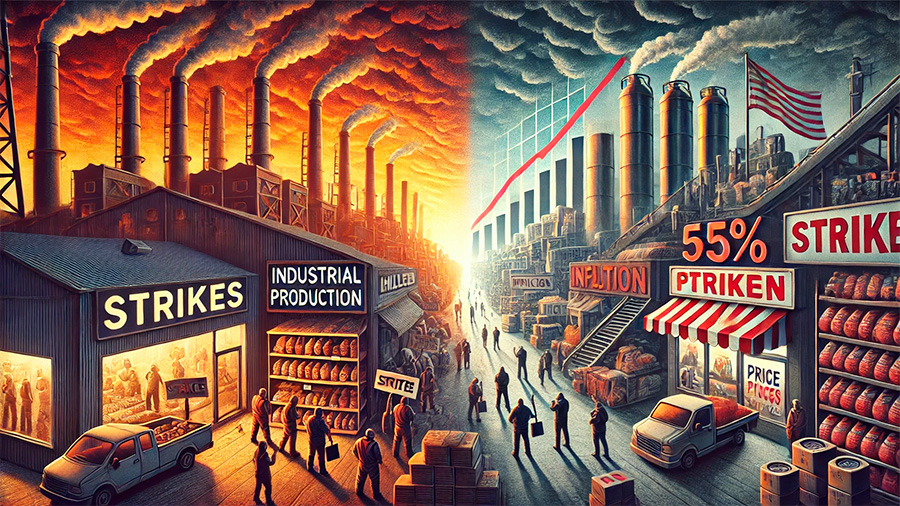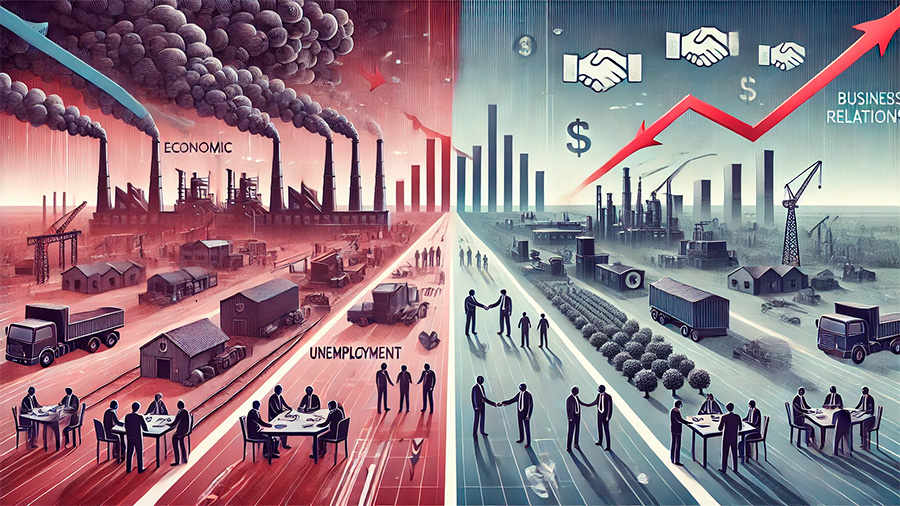Worker strikes can have profound and lasting effects on economies, particularly when they extend over a long period. As industries face work stoppages, the repercussions ripple through supply chains, affecting product availability and leading to significant price fluctuations. Understanding the economic implications of long-term strikes is crucial for businesses, consumers, and policymakers. This article examines the long-term consequences of sustained worker strikes on product availability and pricing.
The Immediate Effects of Strikes on Production
When workers strike, the immediate effect is a halt in production. Industries such as manufacturing, transportation, and services experience disruptions that can lead to significant operational challenges.
1. Disruption of Supply Chains
Long-term strikes can disrupt supply chains, leading to shortages of raw materials and finished goods. These disruptions can cause delays in production schedules and affect the ability to meet consumer demand.
Consequences of supply chain disruptions:
- Delayed deliveries: Companies may struggle to deliver products to customers on time, affecting sales and customer satisfaction.
- Increased operational costs: Companies may incur additional costs to source materials from alternative suppliers or expedite shipments to meet demand.
2. Reduction in Output
Sustained strikes result in reduced output across industries. The longer the strike persists, the more pronounced the impact on production levels, leading to decreased availability of goods in the market.
Impact of reduced output:
- Lower inventory levels: Businesses may find their inventory depleted, leading to stockouts and unmet customer demand.
- Increased pressure on remaining workers: Companies may place additional burdens on non-striking employees to compensate for the lost productivity, which can lead to burnout and decreased morale.

The Long-Term Consequences on Pricing
As production slows and product availability diminishes, the economic landscape shifts, resulting in increased prices for consumers. The effects of long-term strikes can contribute to inflationary pressures across various sectors.
1. Price Increases Due to Shortages
When supply is limited and demand remains constant, prices tend to rise. Long-term strikes create a scenario where essential goods become scarce, leading to increased costs for consumers.
Effects of price increases:
- Basic goods and services: Prices for essential items, such as food and fuel, may rise sharply during extended strikes, impacting household budgets.
- Impact on inflation: Widespread price increases can contribute to overall inflation, affecting the purchasing power of consumers.
2. Increased Production Costs
Businesses facing prolonged strikes may incur higher production costs due to various factors, including the need to pay overtime to remaining workers, source materials at inflated prices, or implement temporary staffing solutions.
Consequences of increased production costs:
- Pass-through to consumers: Companies often pass increased production costs onto consumers in the form of higher prices.
- Decreased profit margins: If companies absorb higher costs without adjusting prices, profit margins can shrink, affecting overall business viability.
3. Shifts in Consumer Behavior
As prices rise due to long-term strikes, consumer behavior may shift. People may become more price-sensitive, seeking alternatives or cutting back on discretionary spending.
Impacts of shifts in consumer behavior:
- Increased demand for substitutes: Consumers may turn to cheaper alternatives, impacting the sales of affected products.
- Long-term brand loyalty: Prolonged price increases can erode brand loyalty, as consumers explore other options.

The Broader Economic Implications
The economic impact of long-term strikes extends beyond individual businesses and industries, affecting the broader economy.
1. Economic Slowdown
Widespread and sustained strikes can contribute to an overall economic slowdown. Reduced production and increased prices can lead to decreased consumer spending, which is a critical driver of economic growth.
Consequences of economic slowdown:
- Higher unemployment rates: As businesses struggle with rising costs and reduced demand, layoffs may occur, further straining the economy.
- Decreased business investment: Economic uncertainty can deter businesses from investing in growth opportunities, leading to stagnation.
2. Changes in Labor Relations
The economic ramifications of long-term strikes can influence labor relations moving forward. Employers may reconsider their labor practices, compensation structures, and communication strategies to avoid future conflicts.
Impacts on labor relations:
- Reevaluation of contracts: Companies may negotiate more favorable terms with workers to prevent disruptions and maintain productivity.
- Increased focus on employee satisfaction: Employers may prioritize creating a better work environment to reduce the likelihood of strikes in the future.
Conclusion
The long-term consequences of sustained worker strikes can have significant impacts on product availability, pricing, and the broader economy. As supply chains become disrupted and production declines, prices for essential goods and services may rise, leading to inflationary pressures. Understanding these dynamics is crucial for businesses, consumers, and policymakers alike. By addressing the root causes of labor disputes and fostering constructive dialogue between employers and employees, stakeholders can help mitigate the risks associated with long-term strikes and promote a healthier economic environment.
